Our Voices: Black Women in Scientific Research
The AAMC Black Women in Scientific Research project elevates the voices and experiences of Black women researchers in academic medicine.
This project spotlights six Black women scientific researchers across the career spectrum — early-career pioneers, mid-career leaders, and established experts — as the authors of their own narratives.
By sharing their stories, these researchers challenge prevailing narratives, give visibility to current Black women in research, increase awareness of disparities facing this group, empower and encourage future researchers, and amplify the value of representation. A biomedical research workforce that includes people from a variety of backgrounds and perspectives enhances the innovation, novelty, frequency, and significance of scientific research, which could lead to the next groundbreaking medical discovery.

On Community
“My research is in triple negative breast cancer, which disproportionately affects Black and Latino women. One thing that I loved about [conducting doctoral research at] Meharry Medical College is, being a historically Black institution, you’re going to have a lot of research that happens in health disparities. But I didn’t know how much Meharry would shape me to really continue the legacy that they instilled in me. The further you go into faculty, the fewer you see of women that identify as being Black, like I do. That can be a hindrance in a lot of ways because being the first of anything comes with its own barriers. … The National Black Postdoctoral Association helped me to find community, and as I’ve become a board member, I try and help others stay connected, as they have helped me.”
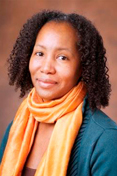
On Representation
“I developed an interest in medicine, but I realized that being an engineer was another path to being able to influence medicine without becoming a medical doctor. Finding community is challenging because oftentimes one of the first places that we gravitate to for community are people who share our identities in some way. I lead with this identity of a Black woman. So, I look for them, and they’re not always in the spaces where I am. At my first institution, I was the first Black woman in the engineering school. And now, at my second institution, I am the first Black women with tenure in the engineering school, and I was the only Black woman until recently. I've been in a lot of spaces where I'm the only one in the room. So for me, finding community has meant stepping outside of my disciplinary boundaries.”
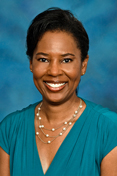
On Impact
“I wanted to pursue community medicine and public health to be able to do more than the one-on-one doctor-patient relationship. I wanted to do something on a larger scale in order to affect more people and have a greater impact. Research allows the avenue for this — it allows us to ask questions that we see in patients and say, ‘How can we test it? Can we come up with an intervention?’ Research allows me to be able to meet a community’s needs. I can tell Ms. Jones, ‘Lower your salt and take your blood pressure. This will reduce your risk of heart disease.’ But research allows us to say, ‘Can we come up with a strategy that will allow us to not only affect Ms. Jones, but a hundred other Ms. Jones?’”
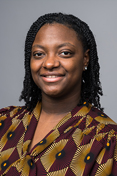
On Impact
“I'm a brand-new assistant professor settling into my department and setting up a lab. I'm an engineer, but not necessarily a tinkering-with-things type of engineer. In the same way that a mechanical engineer might evaluate machinery or motion, I apply those same principles to understand how the human body works — particularly the joints throughout our body. I ask: what does motion, load, and stress do to our joints? Take the jaw joint: it is one of the most heavily used joints in the body. We use it when we eat, when we speak, and when we make facial expressions. We move this joint constantly — all day, every day. So, it bears a lot of load, but it’s also very small. Really small tissues are supporting really important activities that support daily living for us. I’m interested in understanding how all of that varies between different groups throughout the population. Particularly in ways that might align with and help us better understand health disparities in our patient populations.”
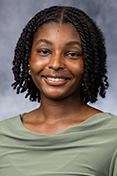
On Community
“For undergrad, I attended the University of Maryland, Baltimore County, as part of the Meyerhoff Scholars Program. It’s a program designed for underrepresented minorities interested in STEM and it gives them the support that they need to pursue careers in biomedical research. Being a Meyerhoff Scholar and going to UMBC was a big part of being able to see myself in the research field and feel confident that I belonged. Being surrounded by other African American students who had similar goals as I did played a big role in pursuing my PhD. I am the only Black person in the neuroscience cohort. … You would definitely want to see more people that look like you. But then, at the same time, there is opportunity to interact with different people from different backgrounds, so that’s always great.”
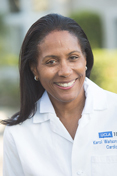
On Overcoming Barriers
“I grew up in Orange County, California, and in our elementary school, me and my brother were the only African Americans. It got a little bit better in middle school and high school, but not a lot. It was a very non-inclusive environment and that shaped my identity in ways that you'll never know. So, we all have identities, some visible, some invisible. … That’s always with me and that lack of inclusion is something I will never forget and I will always fight against anytime I see it. No matter who you are or whatever identity you claim, all of us have felt out of place at some point in time. … I think connecting with that — whether it's your patient, your colleague, anyone — is important.”
Learn More
Find more information on the AAMC Black Women in Scientific Research project in this AAMCNews Viewpoint, “We Need More Black Women in the Biomedical Sciences.”
AAMC Resources
For Current Researchers
- Appropriate Treatment of Research Trainees (PDF). This document highlights the importance of supportive and inclusive training environments for graduate students and postdoctoral researchers.
- The State of Women in Academic Medicine 2023-2024. This report helps readers understand the national percentages of women at key career junctures and identifies specific opportunities to foster greater access to opportunity in the academic medicine learning environment and workplace.
- Women of Color and Intersectionality Initiative. This initiative addresses the recognition that women of color in academic medicine may face multiple forms of discrimination and provides a platform to advocate for their advancement.
- Early Career Women Faculty Leadership Development Seminar. Yearly seminar that provides women at the assistant professor level with foundational leadership knowledge and skills to achieve their career goals, advance, and thrive as a successful leader in academic medicine and science.
- Mid-Career Women Faculty Leadership Development Seminar. Annual three-day seminar designed to provide mid-career women faculty with the knowledge and skills necessary to support their continued progress along the path to leadership in academic medicine and science.
- AAMC Career Development Program for MOSAIC Scholars. This multichannel educational program is for cohorts of National Institutes of Health- (NIH-) awarded K99/R00 scholars from differing backgrounds.
- Maximizing Impact and Networks for Faculty Advancement and Community (MINFAC) Leadership Development Seminar. Yearly leadership development program designed specifically for mid-career faculty who aspire to leadership positions in academic medicine.
- GWIMS Toolkits and Webinars. A collection of toolkits and webinars designed to provide practical guidance, relevant best practices, tips on implementation, and useful references on a variety of topics relevant to women faculty in academic medicine and science.
- Diversity Facts and Figures. This series features a compendium of detailed statistical information on race, ethnicity, and gender patterns in U.S. medical education and practice patterns of the physician workforce.
For Future Researchers
- Dr. Omotade: Unearthing the Experiences of Black Women in Scientific Research. In this article, students interested in biomedical research can learn more about Julia Omotade, PhD, senior policy specialist at the AAMC, and her pathway to a research career. The article also includes AAMC resources on establishing and elevating research careers.
- AAMC Group on Research, Education, and Training (GREAT) Resources. This page features resources compiled by GREAT for students and research trainees throughout their different research career stages.
- Graduate Education for Aspiring Biomedical Researchers (PDF). The AAMC provides resources on training and degree programs for trainees interested in pursuing or enrolled in postbaccalaureate programs, biomedical PhD, MD-PhD, or postdoctoral programs.
- Financing Your Graduate Education. Learn about types of funding and funding packages for graduate education.
- Compact Between Biomedical Graduate Students and Their Research Advisors. This framework is intended to support the development of a positive mentoring relationship between the predoctoral student and their research advisors.
- Is a Postbacc Program Right for Me? Seven Benefits to Consider. This article explores how enrolling in a postbaccalaureate program can help bridge undergraduate studies and entering medical school.
- Tools for MD-PhD Applicants. Helpful tools and information regarding medical MD-PhD programs.
- Tools for PhD Applicants. Resources for those applying to medical PhD programs.
- PhD in Biomedical Science. Coursework, career paths, and more for those interested in pursuing a career in biomedical research.
External Resources
- Broadening Participation in STEM. This page outlines the National Science Foundation’s programmatic commitment to expand the opportunities in STEM to people of all racial, ethnic, geographic, and socioeconomic backgrounds, sexual orientations, gender identities and to people with disabilities.